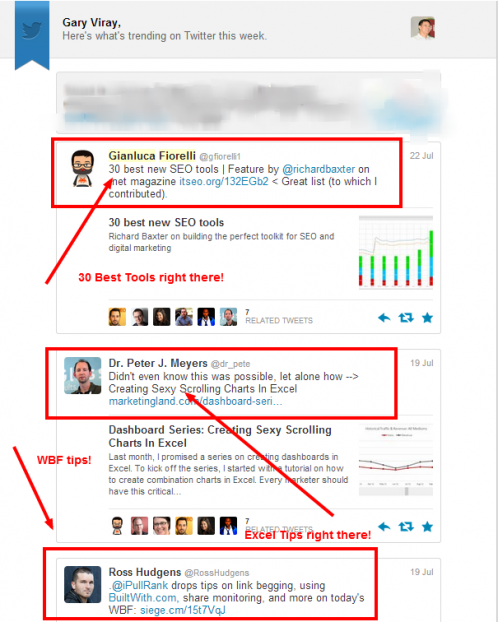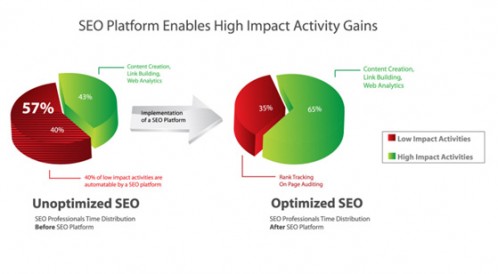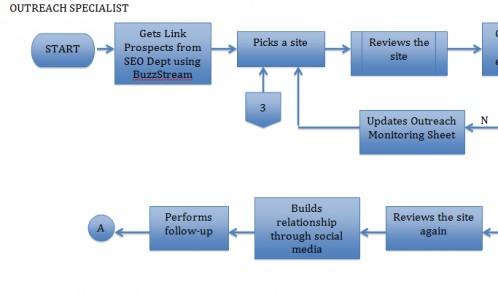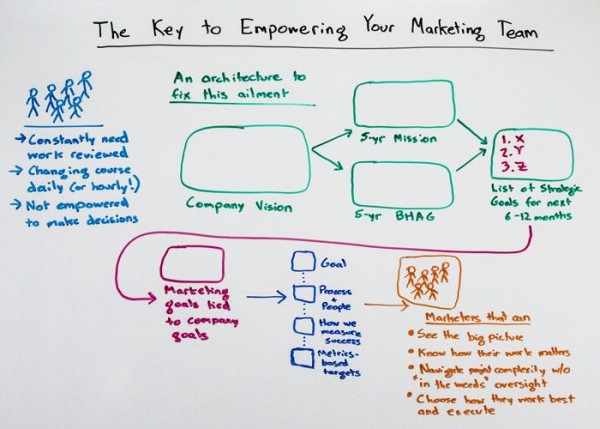If you are an SEO or a content marketer, you may find yourself saying this. “Sigh! I wish I can clone myself in order to scale what I do.”

But such thing does not worry you at all though. Oh hell yeah! As resourceful as you are, you actually find the best tools out there! With a great community you have, you get the beef right at your doorsteps!

But then after some weeks, you may find yourself in the same predicament again saying, “I need to really, really clone myself.”
So, what is really missing? For some, this is the elephant in the room.

Don’t get me wrong here. Getting the right tools to scale your content marketing strategy or SEO output is one of the best things to do so that you can focus more on the essentials – relationship building and high impact activities. Inbound.org has a list of awesome tools that you can use. To give further weight on how SEO tools can improve production, conductor.com released The Unoptimized SEO: How manual tasks sabotage the potential of Natural Search Marketers white paper stating the following below:

Key Findings:
1. There is an inverse relationship between the high-impact tasks SEOs want to be spending time on and the operational, low-impact automatable tasks that they are actually spending time on —which consume up to 4 out of their every 10 hours.
2. SEOs can achieve up to 340x efficiency gains on operational tasks with an SEO platform vs. completing those tasks manually.
3. SEOs can increase their time-spend on high-impact activities by up to 133% by using an SEO Platform.
While I agree with most of these findings, it made me think further on another variable of the equation to actually realize scaling SEO or content marketing tasks which is Process Mapping.
In terms of using the right tool or platform, a word of caution should be inscribed. Using too many of these suggested tools can zap a lot of your time and money when you lack goals and ways of doing things. In short, having no defined processes even when equipped with the right software is like kissing death.
SEOs are cognizant of Analytics, Content Marketing, Panda, Penguin and all other sorts of SEO related stuff just to name a few and there’s one thing I’ve noticed. We diverge in defining many things even if we have common grounds, concepts and principles based on the type of tactics and strategies that we employ. Most of us understand the strategy (the What/Why) and the plan (the How) but once we start digging deeper into the “how” areas of SEO’s daily tasks, we tend to mix things up not knowing where, what and how to start/end each task most of the time. Lack of proper adherence to activity parameters of any SEO strategy & plan is usually the problem. As they say, “The devil is in the details.”
Generally, take it this way. To determine what you need to do to arrive at a goal is the Strategy. The “How are you going to move from A to B” is the Plan in order to anticipate possibilities/risks involved. Then, to establish simple checklists to ascertain things are implemented rightly is the Process that can be linear or with nodes.
Due to varied tasks we undertake as SEOs from outreach, social media, data analysis, excel ninja flipping, account management, technical SEO, etc., we tend to go astray from our focal point of daily activities/tasks which is the real culprit that limits us to increase our SEO output. We succumb to work extra hours again and again… Sleepless, at times.
It should not be.
Many times over the best way to solve this ubiquitous workplace scenario is to take a step backward and see things from a different angle. Dig deeper to your daily activities and draw out your processes.

1. List all your Processes
How will you able to identify if it is a process? Simply put, a process is any activity or group of activities that takes an input, adds value and provides an output to an internal/external receiver.
You need to jot down all your activities.
- Outreach
- Data Analysis
- Link Cleansing
- Concept Building
- Content Creation
- On-page Site Audit
- Link Audit
- Rank Tracking
- Report Generation
- Link Building
- Brand Building
- Competition Analysis
- Community Management
- Conversion Rate Optimization
2. Define each of your process objectives
Ask yourself, why do you work on those modules? What are they for? Are they really needed to achieve those set goals by your company/client? For every SEO process, there must be a goal.
For example, what is the goal of your link cleansing activity or your link prospecting work?
Note: If your process does not have a clear goal then there is no point doing it.
3. Draw your existing Functional SEO Flowcharts
a. Outline or diagram your existing processes.
Come up with a workflow. My best buddies for this type of activity are pen and paper. Remember to be honest with yourself in mapping your activities in order to actually understand later where your bottlenecks and hurdles are.
Having a simple flowchart or diagram is like getting you out of a complete mess in no time.

You can use the following tools:
1. Draw.io is a tool that you can integrate to Google apps for Business
2. Choose process/mind mapping tool list via chrome web store.
3. The ever dependable Visio by Microsoft or MSWord.
4. Gliffy.com is also a good business process modeling software alternative.
b. Document your guidelines or standards
How do you define a spammy website? How over-optimized is an over-optimized site or anchor text? How bad a link profile is? Of course, there are wide array of tools we can use to speed up this process. However; there are instances in your activities that require manual inspection like how ugly a website design is? How ugly is ugly? Whenever you are put in a situation like this where subjectivity is required, you must document your guidelines. This will unburden you in recalling your thought-process in your head if given similar instances in the future. Speaking of cloning yourself again, your decision-making can now be read by your teammates and along the way involved them in improving your guidelines.
Quoting Ross Hudgens about his early lessons from building a consulting company, “In the first six plus months, I essentially ran on experience – no fancy Excel documents, processes or anything like that: this was possible because it all existed in my mind. When you hire someone else, that must be transcribed on paper or at least verbally, and there must be standards for implementation that grow with the company – or your work will suffer as it scales.”
‘Nuff said.
4. Compare process output with your established objectives
With the existing processes assumed to be already mapped out, you now need to put them side by side with your set goals. Are you being effective? Are you doing things at the most efficient manner?
You need to keep in mind that your work needs to be aligned with your company/client’s objectives in order to make sense spending or allocating time/manpower for it. For example, is it really appropriate doing link cleansing activity when you were only asked to work on concept building? Do you check traffic and conversion data twice a day, per hour or once a week?
Rand Fishkin’s WBF entitled, The Key to Empowering your Marketing Team tackled the importance of aligning goals to process and people citing examples on how marketing team can articulate those high level objectives into actionable, definable and measurable activities which for me, it totally made sense.

5. Identify redundant and/or gaps in your routines
Try to check each segment for redundant activities and gaps. This is where you usually see all the loopholes and pain points. All the “fat that you need to cut” are on this stage. You will be surprised with the interoperability and interdependency of each of your processes given that SEO scope has already morphed into a massive set of tasks.

For example, you may find out that social media works are actually tightly tied to outreach and link prospecting tasks. As such, you can better understand which task goes first or runs parallel with others in order to get the best output in the most efficient manner.
Pro Tip: Address pain points and mechanical SEO drills using the right fit SEO tool to your activity.
My personal favorites are Citation Labs, Buzzstream, Followerwonk, SEOGadget, Ahrefs, Screaming Frog, MS EXCEL and MOZ tools.

You can also check out how clambr.com put up together 55 SEO experts reveal their favourite link building tools , Richard Baxter’s 30 Best New SEO Tools and Seer Interactive’s SEO Toolbox.
5. Perform Time Study
The Industrial Engineering Terminology Standard defines time study as “a work measurement technique consisting of careful time measurement of the task with a time measuring instrument, adjusted for any observed variance from normal effort or pace and to allow adequate time for such items as foreign elements, unavoidable or machine delays, rest to overcome fatigue, and personal needs.” – Wikipedia.
I am including here how Six Sigma explains time study to save me time explaining it.
At this point, you can already recognize if you need more/less hours or manpower in order to meet your company/client’s goals. You may be playing super hero or actually, slacking off big time due to unnecessary activities.
6. Communicate and Implement
If you are working with a team, you can actually do the process mapping together and once done, agree on implementing the improved version of your routines.
As a solo SEO practitioner, you must follow judiciously your set flowchart to save you time and give you more leverage scaling your SEO production. You may find out perhaps that you don’t really need a clone or you actually should build a team.
I use Binfire and Trello a lot to ensure that our activities are on track and are communicated properly among all members of the team.

7. Continuous improvement cycle
I am a believer of small iterations, split tests, and improvements. Adapting Agile methodology to your inbound marketing processes is the way to go. Jonathan Colman nailed it via WBF when he talked about Agile marketing. Doing that widely popular 10-minute standing meeting is very helpful to identify immediate barriers and successes among your team members. Every roadblock should be taken into account where modifications of affected activities are implemented at once.
a. Identify / prioritize opportunities
b. Develop Implementation Plans and Change Process
Recognize your priority activities and opportunities (think like doing a SWOT analysis) to keep you on top of the demanding job of being an SEO. If you are working with other departments say, the UX team, you can actually give them timelines in parallel with your scheduled tasks on how you’re going to execute your kick-ass HTML5 content ideas, for example.
Key Takeaways
1. Talking about scaling SEO and content marketing strategies, you can actually transfer your knowledge-base on SEO/content marketing into bits and pieces of processes which are much faster to be digested by your team.
2. Be more of a process-focused SEO so that you can literally replicate yourself when a new team member comes onboard. Of course, you cannot duplicate 100% your innate strategic decision capabilities but you can minimize the long arduous task of getting new members to be trained without guidelines and workflows in place.
3. Right tools are essential but when you are actually looking into growing your SEO production, you can save your neck from growth pains or at least minimize the bleeding when you’ve mapped out your processes from the very start.
4. Document your guidelines/standards especially those that require subjectivity or manual check in order to translate your thoughts to other members of the team.
5. For solo SEO practitioners, still document your guidelines anyway because you may find yourself on the same spot again. If that happens, at least you have a ready laser-guided manual to keep you focused. It will save you a lot of time and weekend works.
6. Be agile and quick in adapting improvements/changes on your processes.
So what is the drift? Focusing on finding the right tools for specific SEO tasks and using scalable SEO/Content marketing strategies can definitely increase output. More so, adding a process or a system in place can further boost your production both immediate and long-term to greater heights. You can minimize duplication of efforts, inadequate or misallocated resources, and unnecessary or non-value added activities.
True SEO scalability is via process, not resources. Your SEO processes are your real arsenal.
Comments
Great in-depth article Gary! This is the kind of content that I look forward to.
Author
Thanks Arvin. =)
Worth reading. Many useful sites you have given. Deep focus on planning daily SEO activity. Really a great article.
Thanks a lot Gary